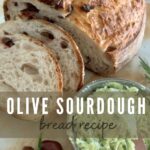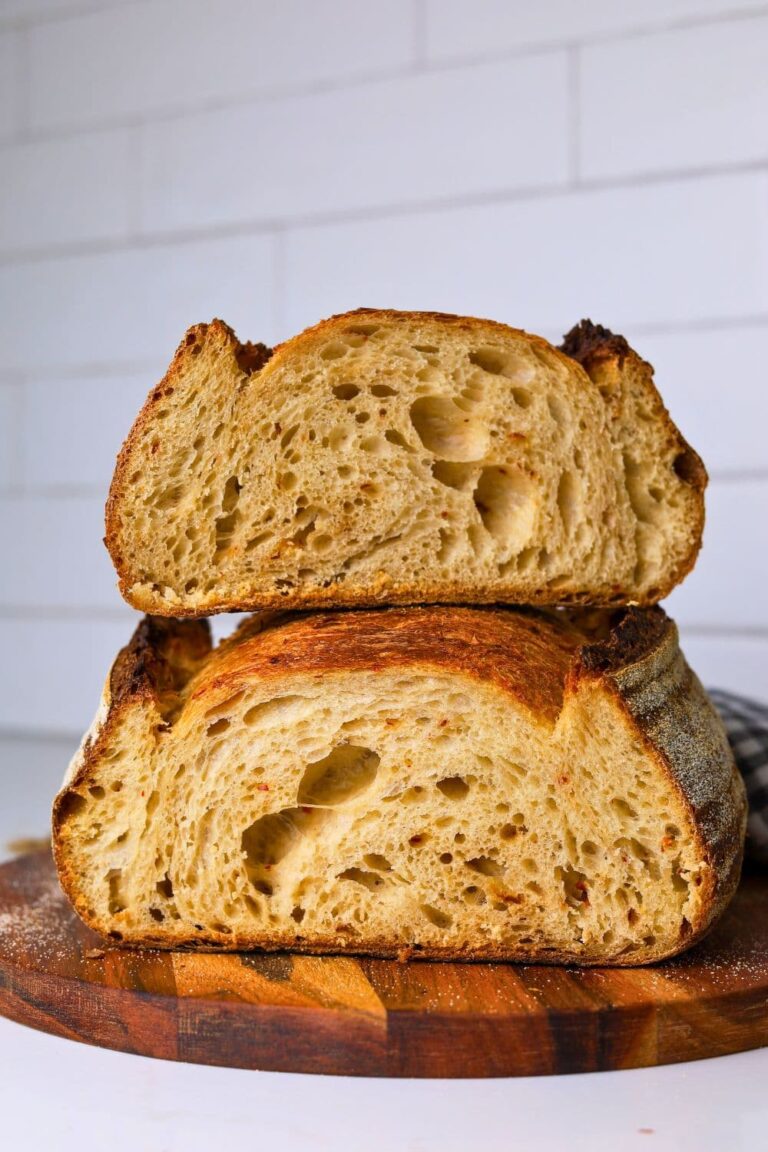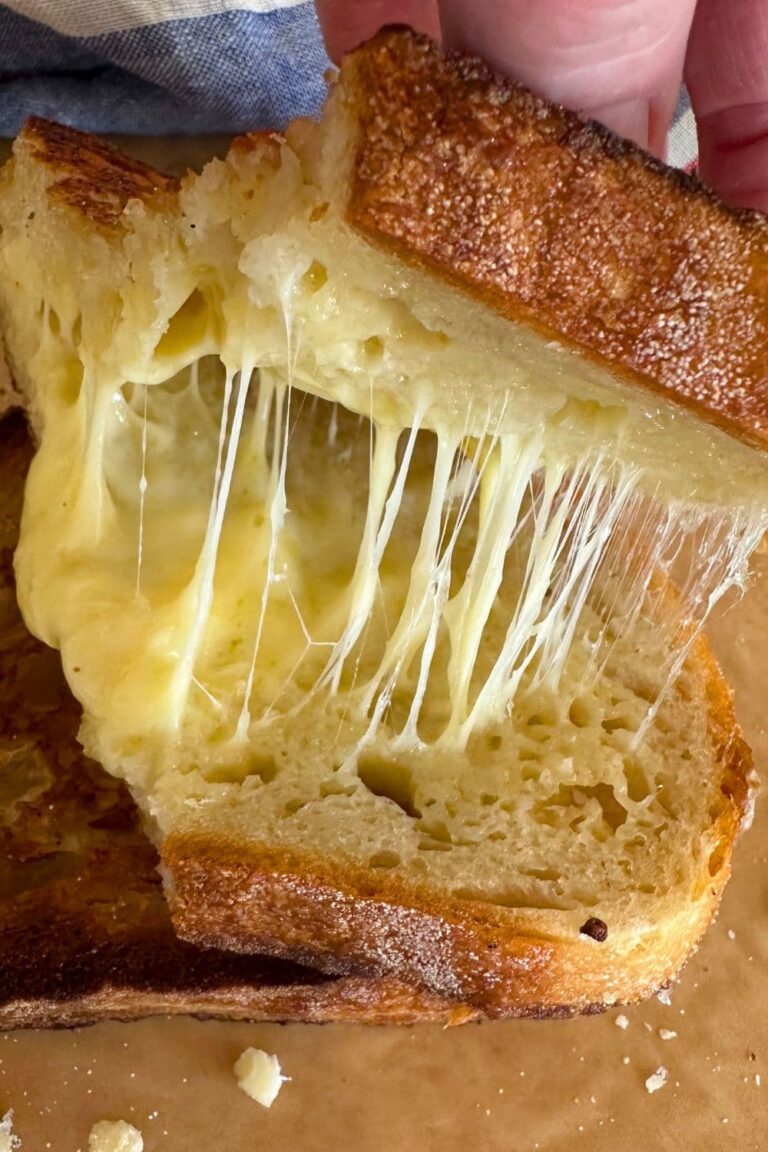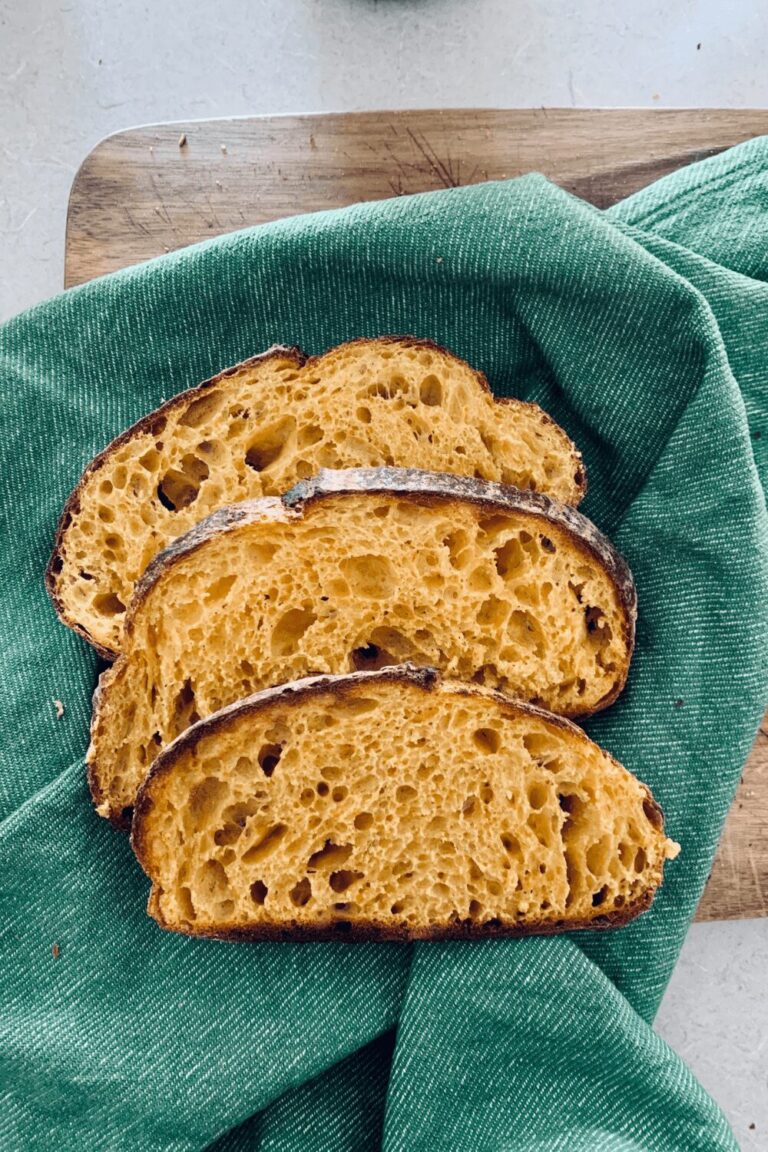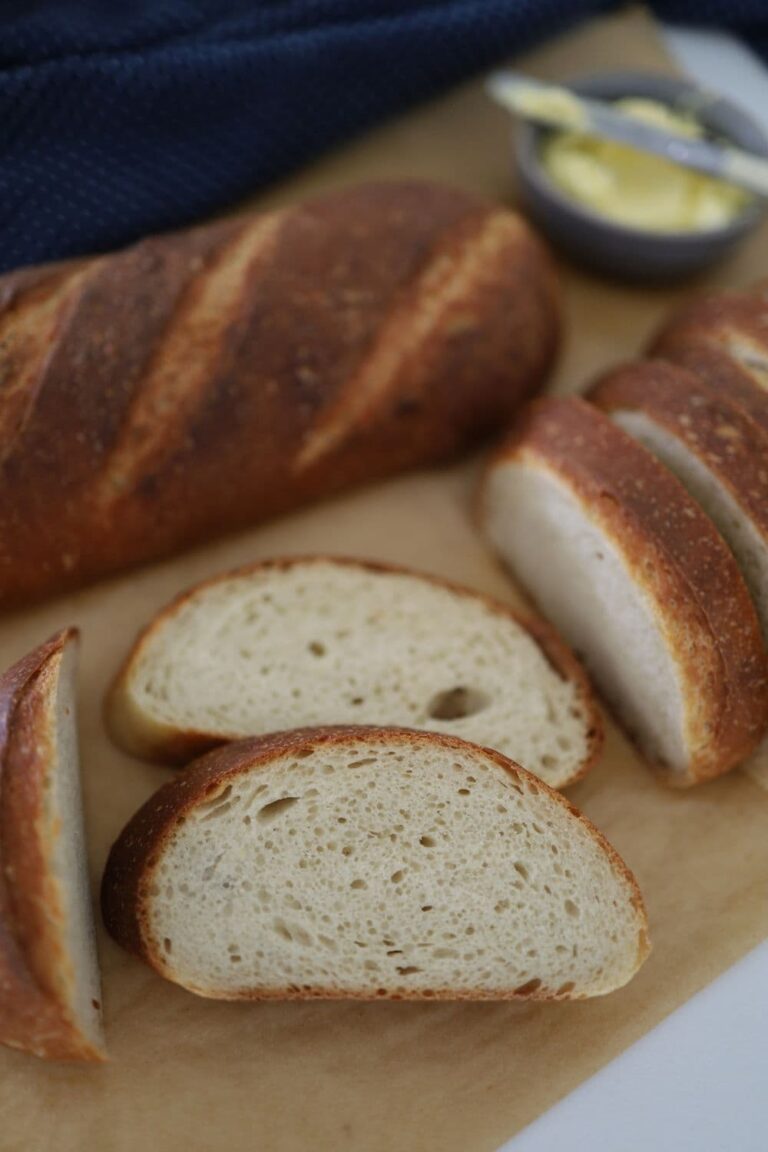Sourdough Olive Bread Recipe
This post may contain affiliate links.
Sourdough Olive Bread is the perfect sourdough bread for olive lovers! A crisp, golden crust surrounds a delicate crumb scattered with salty olives.
It's super easy to make and will be the crown of your next charcuterie platter, dinner party or however you choose to serve it.
You can increase the flavor of sourdough olive bread even further with additions like parmesan cheese, rosemary, thyme or even walnuts (see notes on this further down).
And if you're a true olive lover, why not serve your sourdough olive bread with this olive cream cheese spread?
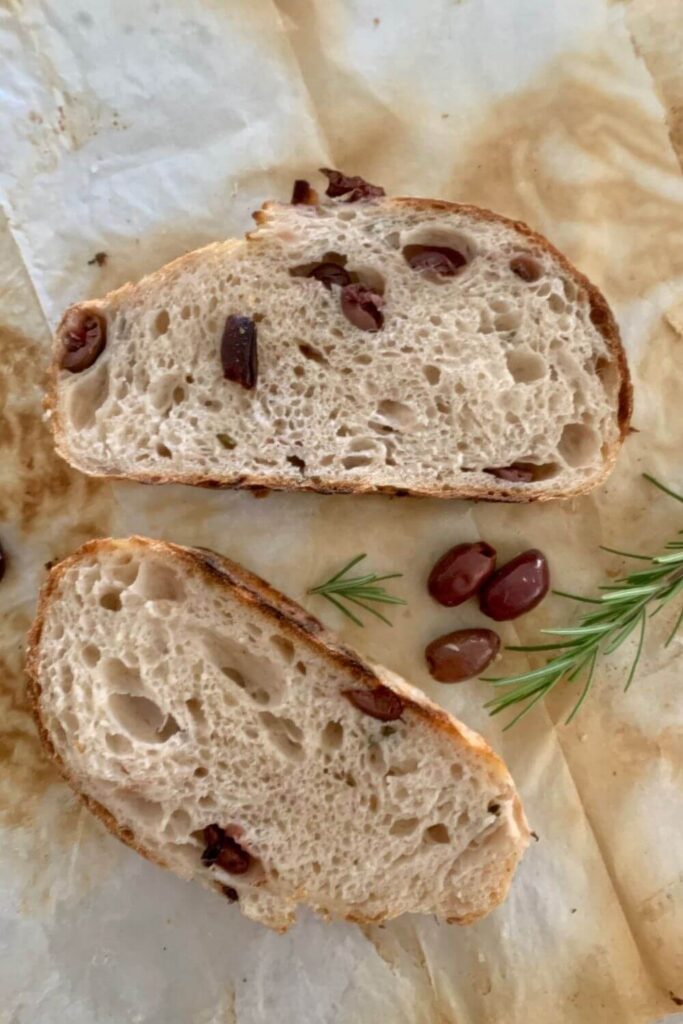
How To Make Sourdough Olive Bread
Making sourdough olive bread is a fairly simple process. This bread uses the same measurements as my simple sourdough bread recipe, with the addition of Kalamata olives and fresh rosemary leaves.
The dough is autolysed as per normal and then the olives are added during the stretch and folds.
If you feel confident, you could also laminate the olives and rosemary, but the additions work fine with stretch and folds too.
The dough is then bulk fermented, shaped and retarded as per normal before baking in a hot Dutch Oven.
Here is the process for making sourdough olive bread:
- Autolyse the sourdough starter, water, flour and salt.
- Form up the dough and then let it rest.
- Develop gluten through stretches and folds and add olives and rosemary (can do this via lamination).
- Bulk ferment the dough.
- Shape the dough and place inside the banneton.
- Cold ferment the dough.
- Score and bake!
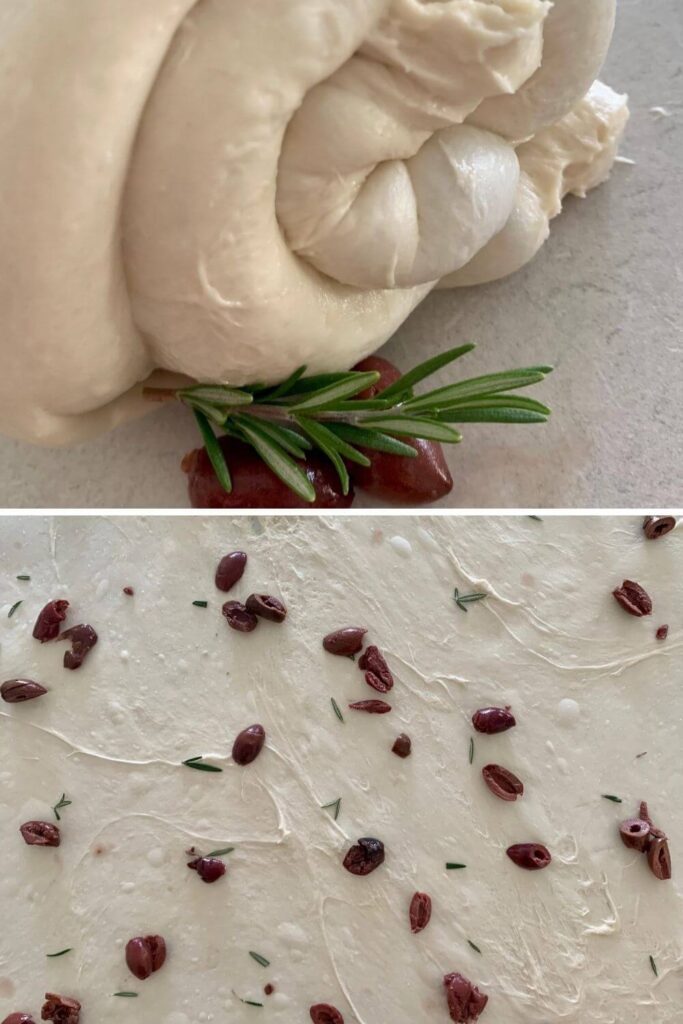
The olives impart their fruity oil into the dough, increasing the flavor profile of this sourdough - as well as helping to give it a thinner, crispier crust.
The dough is enriched with the olive oil, making it very easy to handle. You can shape it as a batard or a boule, depending on what you prefer.
What Is Lamination?
Laminiating sourdough bread means to spread the dough out very thin onto a large, flat surface. This stretches and strengthens the gluten network.
You then sprinkle the add ins onto the dough while it's stretched out and then fold it back up to continue the bulk fermentation.
This sourdough bread was made with Kalamata olives and parmesan (instead of the rosemary in the recipe below).
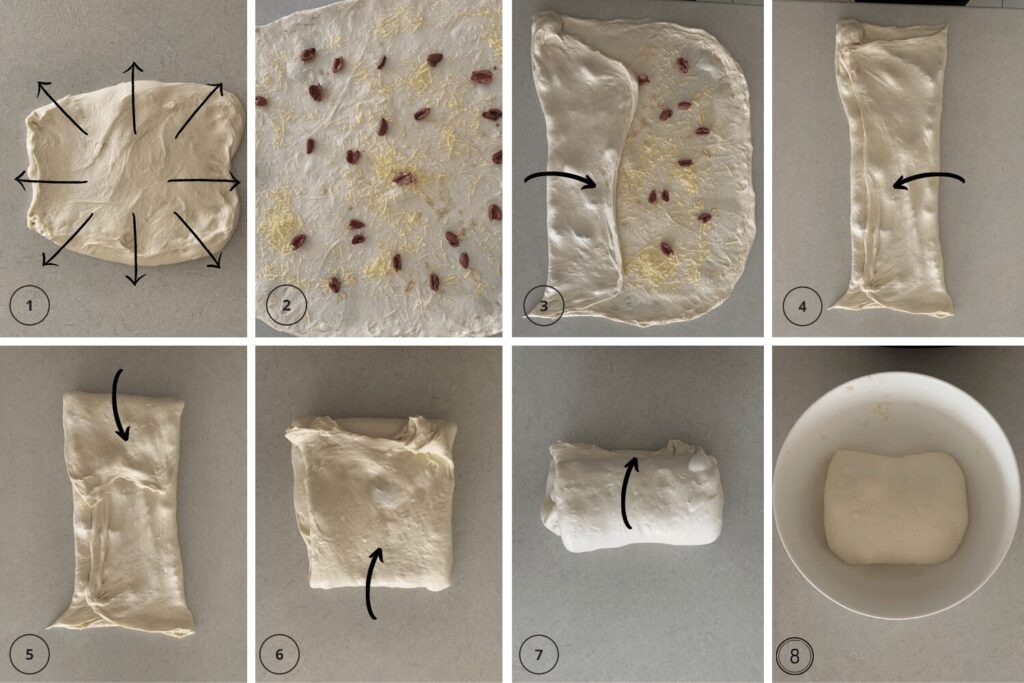
What Olives Do You Put In Sourdough Bread?
You can use any olives you like to eat. There really are no hard and fast rules.
For this loaf I have used Kalamata Olives that have been pitted and halved.
Other olives that will work really well in sourdough olive bread are:
- Green olives marinated in garlic and chili
- Kalamata olives
- Feta stuffed green olives
- Pimento olives
- Mixed marinated olives
You can use "fresh" olives from the deli or fridge section of your grocery store. Canned or jar olives work well too.
I always have a jar of marinated Kalamata olives in my pantry - they are so handy for snacks, charcuterie platters - and of course olive sourdough bread!
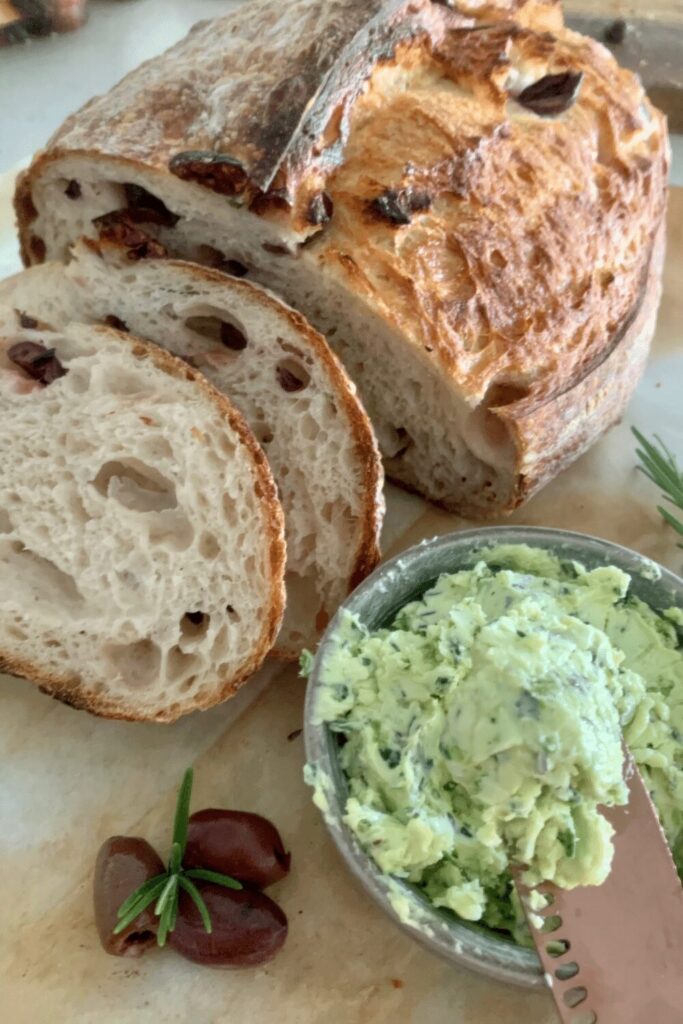
Flavors That Compliment Olives in Sourdough Bread
There's really not end to the flavor combinations you add into sourdough olive bread. Plain olive works really well, but if you have other things on hand, here are some ideas:
- Add 100g of Parmesan Cheese (grated)
- Add 100g of vintage cheddar (crumbled)
- Try adding fresh thyme or oregano instead of rosemary leaves
- Decrease the olives to 100g and add 100g of crumbled walnuts
You'll find more flavor inspiration for sourdough bread here.
Further Reading
If you love this sourdough bread with olives, you'll love these ideas:
- Guide to adding olive oil to sourdough bread.
- Looking for other homemade sourdough goodies for your next charcuterie platter? You'll find some great sourdough cracker recipes here.
- This sourdough olive bread tastes even better spread with whipped herb butter.
- Why not try this Dill Pickle Rye Sourdough Bread - it's definitely a must bake!
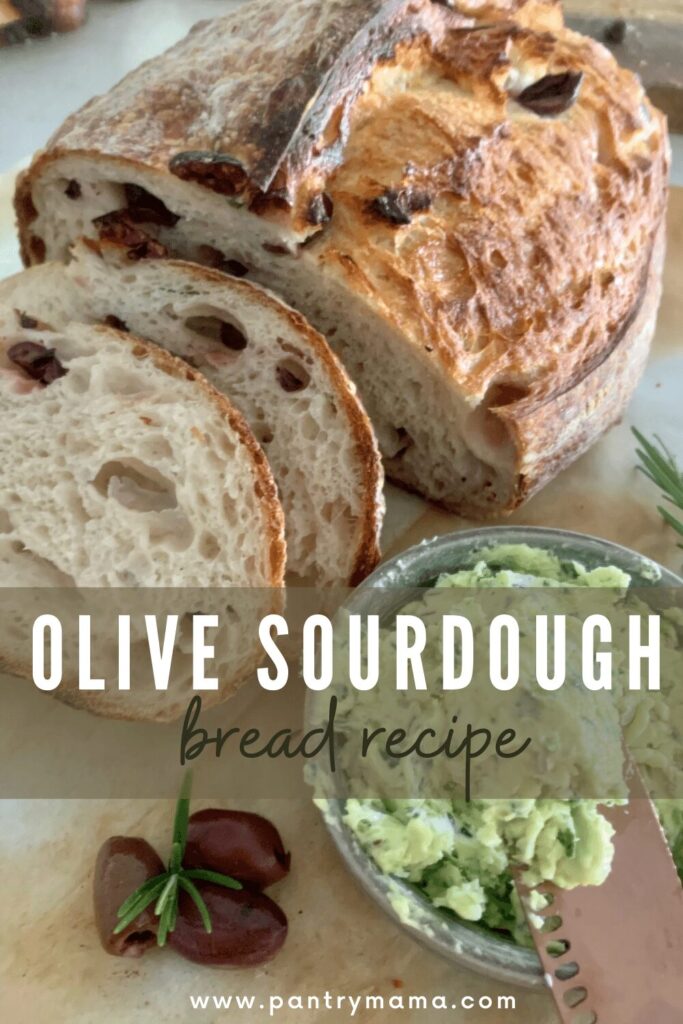
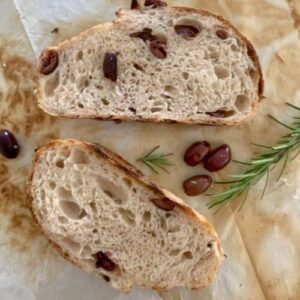
Sourdough Olive Bread
Equipment
- Mixing Bowl
- Digital Scales
- Banneton
- Dutch Oven
Ingredients
- 500 g Bread Flour 100%
- 350 g Water 70%
- 50 g Sourdough Starter 10% (Fed and Bubbly)
- 150 g Olives Chopped and drained
- 5 g Salt 1% (increase or decrease according to your taste - the olives are salty though)
- 1 sprig Rosemary fresh leaves
Instructions
- Autolyse - Premixing The DoughWeigh out your sourdough starter and water into a large ceramic or glass bowl. Glass is always good as you can see what's happening underneath your dough. This recipe is based on you having an active starter that you have fed a few hours before starting your bake.Mix the water and starter together briefly. Then add your flour and salt and mix whole lot together to form a shaggy dough. I find a dough scraper the easiest way to mix it as you can keep the sides of bowl clean.The dough will be fairly shaggy and only just brought together (see photo). You might wonder how this will turn into bread, but just wait, time is your friend and the dough will change in around an hour.
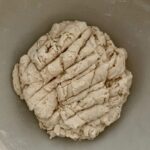
- Cover your bowl with cling film or a damp tea towel and let it sit for around 1 hour. It's ok if it's a little bit longer, it's not going to matter too much.This process is called the "autolyse" and allows your flour to soak in all the water and become hydrated. You can see how the dough has changed in this photo.
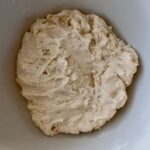
- Forming Up The DoughAfter the dough has been through autolyse you need to bring it together into a ball. Work your way around the bowl, grabbing the dough from the outside, stretching it up and over itself, into the centre, until a smooth ball is formed. You shouldn't need more than about 20-25 stretches to form the ball.You'll notice that the dough is fully hydrated after soaking all the water up. It will be fairly sticky but as you bring it into a ball, it will become smoother and shinier.

- Once the dough has formed into a smooth ball, pop the cling film back on and let it rest for 30 minutes.
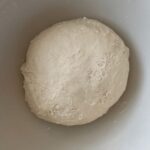
- Stretch & Fold +Adding the OlivesOver the next few hours you need to create some structure for your dough by "stretching and folding", as well as incorporating the olives.Aim to do around 4-6 sets of stretches and folds. For each set, stretch the dough up and over itself 4 times. Leave around 15 minutes in between each set. Again you do not have to be exact with time, but you need to do at least 4 sets over 2 hours.You'll need to add the olives around the second set of stretch and folds. You could also laminate the olives in if you'd prefer. See instructions for lamination further up the page.

- Bulk FermentOnce you've finished your stretch and folds, place the cling film or damp tea towel back over your dough and let it rest and ferment. See notes below for more info on this step.

- Shaping The DoughOnce your dough has finished it's first ferment, it's time to shape it into either a boule or a batard. You'll find full shaping instructions for a batard here and a boule here.
- Placing Into A BannetonOnce the dough is shaped into a tight ball, place it into your banneton smooth side down, so your seam is on the top - this way the top of your dough will get the pretty lines from the banneton. If you're using a cloth or tea towel in a bowl it's ok to put your dough with the smooth side up. Just make sure the dough is tight.Lift your dough around the edges to pop a little more rice flour if you feel it needs it. Just try to handle the dough as little as possible and be really gentle as you really want to preserve all the gases and air bubbles that have formed during your bulk ferment.
- Cold FermentNow the dough is in its "shaping container" cover it loosely with a plastic bag or damp tea towel and place into the fridge. I use a large plastic bag to cover it - I just reuse it each time. Try to leave it in the fridge for a minimum 5 hours up to a maximum of around 36 hours. The longer you leave it the better your bread will be! A longer cold ferment creates beautiful blisters on your crust and a deeper sourdough flavour. It will also ensure your dough forms a skin which makes it easier to score.

- Preparing To BakeOnce you're ready to bake your sourdough, you'll need to preheat your oven to 230C/450F. Place your Dutch Oven into the oven when you turn it on so it gets hot. Try to preheat for around 1 hour to ensure your oven is super hot - but you know your oven so just adjust this time if you need to.Leave your dough in the fridge until the very last minute - placing a cold dough into a hot oven will give you a great "spring".
- Bake Time!Now it's time to bake!When your oven is at temperature, take your sourdough out of the fridge. Gently place it onto a piece of baking paper. Make sure that you make the baking paper big enough to use the edges as a handle to lower to dough into your Dutch Oven.Gently score your bread with a lame, clean razor blade or knife. At minimum a large cross is sufficient, but you can get as artistic as you like. Try to score it fairly deep to ensure the dough opens up.Carefully take your dutch oven out of the oven. Place the sourdough into the pot using the baking paper as a handle. Put the lid on and place into the hot oven. If you want to you can spritz your dough with extra water before you put the lid on.BAKE TIME:30 Minutes with the lid on at 230C/450F plus10-15 Minutes with the lid off at 210C/410F
- Finishing The BakeWhen you remove your dough from the oven, carefully remove it from the dutch oven as soon as possible and place on a wire rack to cool.
Notes
- Notes on Flour: This recipe is written using strong Bread Flour. Bread flour has a higher protein content than All Purpose flour. If you choose to use All Purpose flour you may have a different result because of this.
- Notes on Sourdough Starter: This recipe is based on you having an active starter that you have fed a few hours before starting your bake. For information on whether your starter is ready, go here.
- Notes on Stretch & Folds: If you are going to do the stretch & folds on your bench top, spray your surface with water mist rather than using flour. You can leave the dough in the bowl if you want to. Wet your hands to stop the dough sticking - although it shouldn't be too sticky. It will get less sticky as you do your stretches and folds.
- Notes on Bulk Fermentation: If your home is warm then your dough will ferment a lot faster and could be done in as little as a few hours. If it's colder, it will take longer, possibly overnight.
I would recommend that you try to do your first few bulk ferments during daylight hours so that you can watch your dough closely.
Once you're more familiar with the process - and the temperature of your home - you will be able to do overnight ferments. You will know your dough is ready to move to the next stage when it has *just* doubled in size. It will be fairly wobbly and full of bubbles. You should be able to see large air bubbles under the surface of the dough.
You don't want to let it go any further than doubled as it will be over fermented.
If you want to do an overnight ferment, but your home is warm, consider using a little less starter (ie 25g).
Less starter means your dough will take longer to ferment and you will reduce the risk of over fermenting your dough. You'll find more information on these topics here:
When is my bulk ferment finished? What is the difference between cold ferment and bulk ferment? Why does the amount of starter matter?
- Notes on Baking: If you're worried about the base of your bread burning, place a baking sheet on shelf underneath your Dutch Oven - it works! If you're worried about your bread not being cooked all the way through, turn the oven off and place your dough straight onto the oven rack. Leave the door ajar and let your bread rest there for a few hours. Make sure you don't close the door or your sourdough will sweat and you'll get a wrinkly, soggy crust. Remember not to cut into your loaf too soon - you'll need to let it cool for at least a few hours (4-6 is best).
